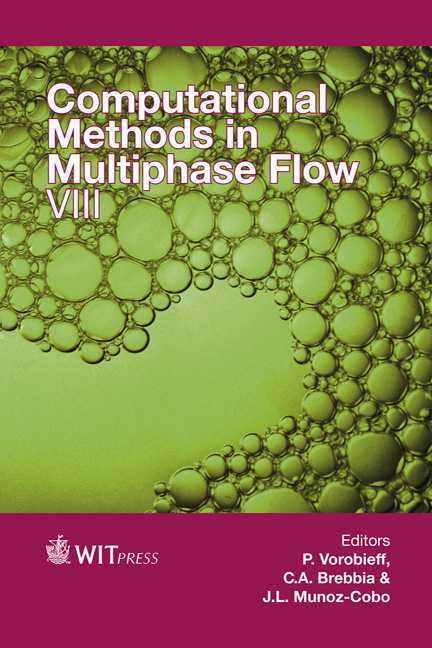Experimental And Numerical Investigation Of Liquid Jets Evaporating In A Dilute Gas–liquid–solid Pipe Flow
Price
Free (open access)
Transaction
Volume
89
Pages
12
Page Range
183 - 194
Published
2015
Size
846 kb
Paper DOI
10.2495/MPF150161
Copyright
WIT Press
Author(s)
W. Arnold, S. Wirtz, V. Scherer
Abstract
The application of selective noncatalytic reduction (SNCR) in modern cement plants is complex, since the evaporating additive is injected into a highly particle-laden hot gas stream and therefore the conventional two phase evaporation approach may not be adequate to describe the system. After a collision with a particle, the droplet is either fully evaporated or a wetted particle is formed, depending on the difference of particle size and particle heat capacity with respect to gas and liquid phases. This can result in a deviation of the jet penetration depth from the conventional two phase (gas/liquid) theory. Experiments were conducted to examine the behavior of liquid jets evaporating in a gas–liquid–solid pipe flow. The test facility consists of a vertical pipe in which a continuous flow of quartz sand particles and hot air in thermal equilibrium is established. Water is injected into this stream by a pressure nozzle in co-flow with the gas solid stream. The evaporation is investigated with thermocouples. Effects of solids loading and system temperature on the jet evaporation behavior will be presented. In order to consider the measured effects in CFD simulations, an existing stochastic particle collision model has been extended to account for droplet–particle interaction in three-phase flows. This model predicts the probability of droplet–particle collisions and in case of collision, droplet movement and evaporation behavior change. Comparisons with the experimental data show that this model can predict reasonable results for the temperature distribution for various operational conditions.
Keywords
evaporation, particle–droplet-interaction, gas–liquid–solid flows, cfd-simulation





